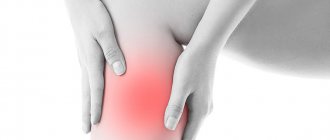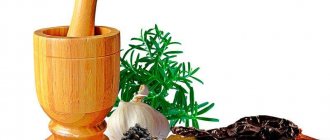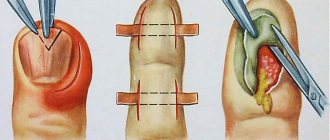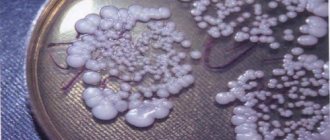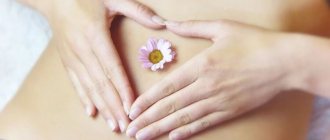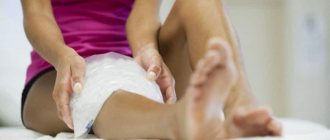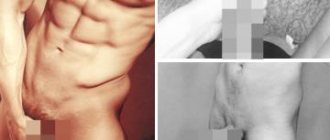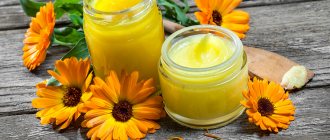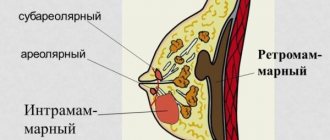Home » Traditional recipes
Folk recipes
Author Maria Khorolets Reading time: 8 min. Views 13.3k. Published 09.09.2015
Dry callus is a very common problem. As a rule, it occurs on the heel or sole of the foot, causing a lot of discomfort when walking. Many have learned to solve this problem in a very unconventional way, by placing special insoles in their shoes with a hole cut out for the callus or cotton wool. However, this does not eliminate the problem itself, but, on the contrary, strengthens it. Therefore, today we propose to talk about how you can use proven folk remedies to quickly and effectively get rid of any types of dry calluses, forgetting about constant discomfort.
- Types of dry calluses
- Treatment options
Herbal remedies
- Therapeutic baths for dry calluses with a rod
- Homemade ointments
- Other means
How to get rid of dry callus on your finger?
To begin with, it is worth noting the fact that calluses are divided into two types:
- dry;
- wet.
Dry calluses, also known as corns, are most easily removed with a rough pedicure file or regular pumice stone. The best effect is achieved if problem areas are treated dry, without steaming.
For those who still cannot do without first softening the skin, it is recommended to soak their feet in a mixture of soda (2 spoons), liquid soap (2 spoons) and hot water for half an hour. Such a bath will soften the rough epidermis and help remove corns faster than in the case of dry grinding.
Another option is to apply salicylic ointment (10%) to the callus at night. Fans of homemade recipes can prepare a homemade compress from the pulp of black bread, soaked in vinegar or lemon juice, with the addition of grated lemon zest. Regardless of which method you prefer, after lubricating the calluses on your foot, you need to put on a plastic bag and a warm sock. In the morning, all that remains is to cut off the already soft and pliable skin.
If we talk about pharmaceutical products, then a special medicinal patch helps to effectively get rid of corns. It is glued onto pre-steamed feet and changed every 24 hours for 3-4 days (until the callus is completely gone).
Now the question of how to get rid of calluses and corns will no longer arise for you.
Treatment with folk remedies
In the early stages, before the core has formed, you can try treating dry calluses with folk remedies.
| Means | Methods of application |
| Bath with soda and soap | Place your feet in a container with warm water and two tablespoons of baking soda and take a bath for 30 minutes. For the desired effect, such a bath is taken regularly. |
| Bath with pine concentrate and sea salt | Buy salt with pine concentrate in cosmetic departments. Dissolve a couple of spoons in warm water and soak in the bath for 20 minutes, then use a pumice stone to gently remove the corns. |
| Flaxseed bath | Pour a liter of boiling water into a glass with flaxseed and leave for an hour, keep your feet in a bath with flaxseed every day until the calluses go away. |
| Propolis | Apply propolis to the callus and secure it with a band-aid; after three hours the compress can be changed. After a couple of days, the skin will become softer and the callus will go away. |
| Aloe | Cut an aloe leaf, rinse with water and cut in half along the leaf. The leg is first steamed, then an aloe leaf is applied and secured with a band-aid. The compress should be left overnight. |
| Onion | Cut a small onion in half, soak it in vinegar for 24 hours, and then secure it to your leg with a bandage or plaster. The compress is changed twice a day; it helps to quickly get rid of calluses. |
| Lemon | Grind the whole lemon in a blender, apply the pulp to the steamed callus, fix the compress and leave for a couple of hours, remove the callus with a pumice stone. |
| Garlic | Chop a few cloves of garlic in a garlic press or using a knife. Apply garlic pulp to the callus, wrap it with cling film and secure with a bandage. It is better to wear woolen socks on top. Leave the compress overnight to get rid of corns you will need several procedures. |
| Bath with soda and chamomile infusion | Brew chamomile flowers, pour the decoction into a bowl with warm water and soda. Take such baths several times a day. Gradually remove dead skin with a pumice stone. |
| Tomato | Cut the tomato in half and apply one half to the keratinized area, leave overnight in this position. |
| Onion peel | The onion peels need to be poured with vinegar and left for a couple of weeks, then the vinegar needs to be drained. Apply the peel to the callus overnight. Pre-lubricate the callus with cream or Vaseline. |
| Potato | Grate the potatoes, place them on a gauze bandage and secure them to the area with the corn. This compress should be kept for two hours. |
| Camphor alcohol | You can lubricate the keratinized areas with camphor alcohol every day. |
| Celandine and Vaseline | Mix one part of celandine herb juice with four parts of Vaseline. Apply this mixture with celandine at night for a week. |
| Tea tree oil | Add a few drops of tea tree oil to a container of hot water. Immerse your feet in the bath for 20 minutes, then wipe dry and make any compress from natural ingredients. |
| Garlic, potato, aloe and onion compress | An effective way to remove dry calluses is to apply a mixture of grated potatoes, onions, aloe and garlic to them. |
| Compress of grated radish and honey | After any bath, you need to apply grated radish mixed with honey to the callus and leave overnight. |
How to quickly get rid of calluses on your feet?
The second type of consequence of wearing tight shoes is water (wet) calluses. The fastest way to get rid of them is with a puncture. This method is controversial, since if the callus is damaged, there is a chance of infection. However, it cannot be denied that calluses freed from fluid heal much better than those that are not punctured.
If you nevertheless decide to “dry” the callus, then take care of sterility in advance: thoroughly wash your hands and the problem area itself, heat the tip of the needle over a fire or disinfect it with alcohol, prepare a napkin/gauze disinfected with an antiseptic to absorb the ichor from the callus.
After the callus is punctured, it must be treated with antimicrobial ointment and sealed with a medicinal plaster. At night, you can additionally apply products that accelerate tissue regeneration.
Types of dry callus
There are two types of dry callus:
- Hard calluses appear most often on the fingers and toes, that is, on skin that lacks hair.
- A soft, dry callus usually occurs between the toes. The skin that is located in the center of the callus is very hard, and the skin around it does not give in to any visible changes.
The location of dry calluses is the toes, as well as the outer side of the little toes. This is precisely the greatest difficulty in treating them. Treatment is also difficult if the callus is old. If a callus appears at the base of the big toe (its inner or outer side), then it can cause great inconvenience and unpleasant pain when walking.
Calluses on feet: how to get rid of them?
Calluses are hard, rough areas of skin with a dot (spot) in the center. They do not have a cavity, but they have a rod that goes deep into the thickness of the epidermis.
Calluses are a consequence of ignoring corns. The problem is most often localized on the heels and balls of the toes. People who wear uncomfortable shoes, suffer from fungal or viral skin infections, and often injure their feet (athletes, ballerinas, etc.) are at risk of developing such an unpleasant defect.
It is possible to remove calluses with a core at home, but doing it yourself is highly not recommended. The fact is that inept manipulations with periodically inflamed calluses are dangerous not only due to the increased likelihood of infection, but also to the risk of injury to the deep layers of the epidermis.
If you find a corn with a dot inside, it is better to immediately consult a dermatologist, who will offer you one of three options for solving the problem:
- Removal of the callus using a special cutter (the depression formed in the skin is filled with an antiseptic).
- Removing calluses with liquid nitrogen.
- Removal of calluses with a carbon dioxide laser (the most modern and effective method of treating calluses, eliminating the risk of inflammation).
All of the above procedures are painless, but in case of increased sensitivity they can be performed using local anesthesia.
Dry callus and its causes
Dry calluses are rough thickenings of skin areas that appear in areas of high friction and have a yellow or gray tint. The formations themselves are not painful upon palpation, but they compress the surrounding soft tissues, which causes serious discomfort. Conditionally dry calluses on the feet are divided into the following types:
- Hard, or corns, are compacted growths that penetrate shallowly into the skin. In appearance, these are small tubercles, covered with rough callus on top. Most often they appear on the sole, at the junction of the fingers and foot, on the side of the little finger or on the big toe, less often - between the toes.
- Soft - calluses with a wound on the outside, not too dense in structure. Over time, they transform into corns. Localization - in the spaces between the toes, on the bone at the back of the foot.
- Rod - have a rod inside that extends into deep tissues. They often appear on the heel, on the sides of the foot, and cause severe pain when moving.
Rare types of calluses are vascular, inside which there are blood vessels, and fibrous - a very dense zone of hyperkeratosis, covered on top with a “cellular” callus.
Most often, the problem occurs in girls and women who prefer to wear dress shoes. Often such shoes are narrow, high-heeled, tight, and therefore rub the skin of the foot, especially in the hot season. Dry calluses also often appear on a child’s feet if parents purchase shoes that are the wrong size or fit, or shoes that are too narrow. If the shoe last is of poor quality, calluses form on the heels, under the toes.
There are a number of risk factors that increase the risk of dry calluses:
- diabetes mellitus and other tissue trophic disorders;
- psoriasis and a number of other skin diseases;
- arthrosis, arthritis of the joints of the foot;
- “bones” on the fingers;
- flat feet, club feet;
- obesity;
- excessive dryness of the feet;
- poor foot care;
- age-related loss of skin elasticity;
- foot hyperhidrosis;
- vitamin deficiencies;
- intense sports activities.
Among the common causes of foot rubbing are wearing shoes without socks and using synthetic underwear.
How to get rid of callus at home
If for some reason it is not possible to contact a specialist, there are several methods for eliminating callus at home. All techniques are based on the initial softening of the corns and its subsequent mechanical removal.
For the first stage - softening - a patch with salicylic acid is most often used, which is glued to the problem area and then secured with a bandage or any other fixing agent. You need to wear the patch for several days, after which you can try to remove the callus core mechanically. If the “operation” is successful, the remaining indentation in the skin must be treated with iodine and sealed with a band-aid until complete healing.
If the problem was noticed in the early stages, then the removal of the callus will take place quickly and without much discomfort, but if the situation is advanced, then the first attempt to remove the rod may end unsuccessfully: the “cap” of the callus will be removed, but subsequent manipulations will be very painful.
Even taking into account the possibility of getting rid of callus on your own at home, in order to avoid complications, it is better to contact a qualified dermatologist.
How to cure?
Treatment of corns on the sole, first of all, depends on eliminating the cause of their formation . Find out if you have diseases that contribute to their formation, replace your shoes.
You should also use auxiliary means to soften the pressure on the foot: special inserts, shoe insoles. If the cause is flat feet, replace regular shoes with orthopedic ones .
Let's find out how to treat corns on the soles of the feet. Treatments are divided into two types :
- Mechanical . These include all methods using various devices.
- hardware pedicure . A softening agent is applied to the skin of the foot, then polished with a pedicure device;
- laser or cryogenic removal . It is carried out using special equipment in clinics or beauty salons.
You can learn more about these 3 treatment methods here.
- Medication . Self-removal using various means.
- ointments - contain salicylic acid and natural extracts that soften the skin. The ointment is applied to the affected area and sealed. The duration of action of the ointment is indicated in the instructions.
- anti-callus plasters - they contain special substances that help get rid of callus. The patch is glued to the callus according to its shape and left for the required time.
Now you know how to treat corns on the soles of your feet. Let's look at each tool in more detail.
Apply ointments and creams
First, let's take a look at how to remove dry calluses on the sole of the foot using pharmaceutical products . The most popular and widely used drugs are the following:
- “ Antimozolin ” – it contains lactic acid and carabide, which soften the skin and remove growths.
The active ingredient of the ointment is keratolin, which can penetrate into tissues and exfoliate dead parts. The skin becomes soft, pain goes away. The herbal ingredients in the product help avoid irritation and dryness of healthy skin. - " Bensatiline " is a keratolytic and antiseptic ointment based on salicylic and benzoic acids. Used on steamed feet.
- “ 5 days ” – used for the treatment and prevention of calluses. The composition includes petroleum jelly and lanolin, which have a softening effect.
All of them are affordable and freely available, they know how to get rid of corns on the soles of the feet at the initial stage. But, before you remove corns on the soles of your feet with their help, you should study the disadvantages :
- they must be applied very carefully. If the ointment gets on healthy skin, it will cause a burn;
- you may not achieve the desired effect in advanced cases;
- Sometimes ointments cause allergic reactions.
We use callus plasters
Special anti-callus patches are popular remedies for corns. How to cure corns on the soles of the feet using this remedy?
The components that soften the rough areas are already applied to them; you just need to cut out a piece of the required size and stick it on the area of dry callus.
The most popular brands are:
- " Compeed ". This type of anti-corn patch has an extended period of validity. According to reviews, it differs from other patches in its maximum effectiveness. With its help you can remove even shallow core calluses.
- " Salipod ". Patch with sulfur and salicylic acid. Has an exfoliating, antiseptic effect. The effect is enhanced by lanolin, rubber, and rosin included in the impregnation of the patch.
- " Urgo ". Salicylic acid based patch. It differs from others in ease of use. Its round-shaped healing surface is equipped with a protective pad that helps protect healthy skin from acid exposure.
Attention ! Brands of Chinese callus are now on sale Their disadvantage is a very strong concentration of phenol and salicylic acid, so their use is not safe for healthy skin.
Having learned how to get rid of dry calluses on the soles using a patch, you should read about their positive and negative qualities. The advantages include ease of use and quick achievement of effect .
However, they also have disadvantages :
- danger of skin irritation;
- impossibility of use in the presence of wounds;
- allergic reactions to the components included in the composition.
Treatment in the clinic
Solving problems with corns on your own is effective only in not very advanced cases.
But sometimes it is not possible to cope with this problem at home , and then it is worth turning to specialists.
If you have an old dry callus, how to cure it? Treatment is provided by beauty salons, laser medicine clinics, and dermatologists.
Experts use grinding cutters .
In addition to resurfacing, doctors use cryotherapy . Calluses are treated with liquid nitrogen or some other chemical.
Dry callus on the sole: treatment with laser resurfacing of calluses is used in special clinics. Using a special laser unit, the diseased area is painlessly removed.
You should not self-medicate and it is better to immediately contact a specialized clinic in the following cases :
- in the area of the corns there is redness or blueness, pain;
- swelling appeared on the foot ;
- calluses appear on the feet all the time .
Reference ! The cost of medical procedures for removing corns on the soles depends on the degree of damage , location, and status of the medical institution. The range of prices for the procedure ranges from 700 to 4000 rubles per procedure.
In clinics in Moscow and St. Petersburg, the cost of the procedure is from 1,500 to 3,000 rubles , depending on the degree of damage and the size of the lesion.
In the regions, the average price for this procedure is 700-1400 rubles .
We derive using folk remedies
In addition to medicinal treatment methods, there are many ways to independently treat corns on the sole using improvised means.
- Compresses.
- onion _ A vegetable cut into thin rings is applied to the affected area and secured with a bandage;
- tomato _ Using tomato paste;
- based on propolis . Propolis should be ground and applied to the corn under a cellophane bandage;
- based on celandine leaves ;
- with bread crumb . It is dipped in table vinegar and applied to the corn.
Soda, ammonia and grated soap are dissolved in hot water (all a tablespoon at a time). The feet are steamed for 30 minutes, then the roughened area is removed with pumice. Instead of the previous components, you can add salt to the water (three spoons per two liters of water).
Instead of bath water, you can use whey.
- egg _ A raw egg, a tablespoon of vegetable oil, a spoonful of vinegar essence are mixed and placed in the refrigerator overnight. The next evening, a compress is made from the ointment for the night;
- potato _ Prepare potato peels (100g), two tablespoons of flaxseed. Everything is cooked for 30 minutes and placed on the sole for half an hour.
Now you know what it is - corns on the soles: treatment, look at the photo. Let's move on to disease prevention.
Other little-known folk remedies for corns can be found at the link.
How to get rid of a callus on the foot?
Corns on the feet are a common problem, the solution of which is made difficult by the constant load on this place while walking. If you do not take into account specialized creams, oils, ointments and plasters sold in any pharmacy, you can get rid of calluses on the feet using folk recipes.
For example, steaming the skin in a bath of hot water diluted with a strong chamomile decoction helps to cope with corns. It takes half an hour to soften the rough skin of the feet, after which the problem area should be thoroughly treated with pumice, wiped dry and lubricated with nourishing cream or fatty oil (olive, almond, sandalwood). To enhance the effect, you need to put on socks and take a horizontal position for a while so that the skin is moisturized and softened as much as possible.
It is important to remember that neither folk remedies nor pharmaceutical remedies for calluses will help if you continue to wear uncomfortable, tight shoes. Filed-off corns will simply return in a more severe form.
Do I need to remove dry callus?
Usually, a callus does not cause much trouble or discomfort, but is only a cosmetic defect. If the callus does not bother you, then it is not necessary to remove it. However, if a dry callus causes discomfort, you should consider removing it.
Direct indications for removing dry calluses are:
- The appearance of pain and itching;
- Changes in the skin around the callus: redness, swelling;
- Callus cracking, bleeding;
- Change in callus color (red, blue, purple, etc.);
- The appearance of dry callus in a person suffering from diabetes.
Methods for treating dry callus
Medical clinics use a variety of methods for treating dry calluses. The most popular are:
- Cryodestruction is the removal of dry callus using liquid nitrogen. The essence of the procedure is that the callus is exposed to cold (liquid nitrogen under low pressure) for a long time. Treatment usually takes several days. Then young skin begins to grow at the site of removal.
- Laser removal of calluses. It is non-traumatic and quickly relieves pain. Under the action of a laser beam, deformed tissues evaporate. This allows you to prevent the occurrence of an inflammatory process.
- Instrumental treatment of dry calluses. The patient receives a guarantee that dry callus will no longer appear in this area, which all of the above treatment methods do not promise.
Our clinic specialists will help you choose the most effective way to treat dry calluses, as well as other skin diseases.
Reasons for appearance
The main cause of calluses is uncomfortable shoes. So, very narrow or high-heeled shoes create some discomfort for the foot, so calluses form in places of strong pressure. If the shoes are the wrong size or too big, then a callus on the foot can form as a result of constant friction of the internal seams or rough edges. People with flat feet are especially predisposed to calluses. Therefore, in order to avoid such situations, it is necessary to select shoes of a size that ensures normal blood circulation and eliminates the possibility of friction.

